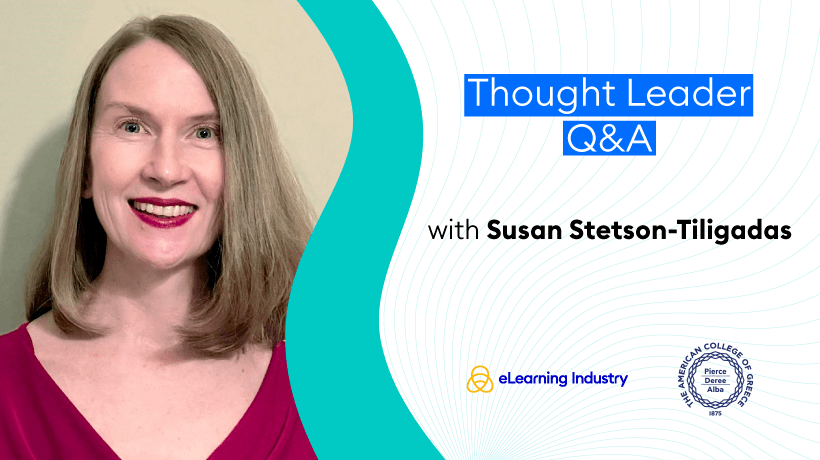3 Wrong Practices That Scare Off Learners And How To Avoid Them
I open my eyes, and find myself in the expansive African wilderness. I’m soaking in the beautiful sunrise and the sights and sounds of the savanna, when I hear a deep growl from somewhere on my right. As it grows louder and louder, I try to locate the source of the sound with rising anxiety… and suddenly, out of the tall grass, a huge lion leaps towards me.
I stand there, frozen in place, not knowing what to do, when… I awake with a start in the safety of my bedroom. (Confession: I’ve never been to the African savanna, let alone meet a wild beast face to face at close quarters.)
The good news is that we are rarely under threat of being attacked by a lion. But every once in a while, we come close. Imagine these situations:
- Your spouse vents their frustration on you for something that happened at work.
- A co-worker unleashes her abusive power on you for no clear reason.
- Your child is locked inside your car, and the keys are inside.
- You are placed in front of 500 people and asked to speak extemporaneously.
… all equivalents of a lion chasing us in the urban wilds.
And our reaction? A panic attack is triggered, heart rate increases, the throat constricts, and muscles tighten. This instantaneous reaction, the classic flight-fight-freeze response, is caused by a pair of almond shaped structures in the brain called the amygdala.
In a stressful situation that involves a perceived threat, the amygdala causes a surge of cortisol, a stress hormone, and shuts down the neural pathway to the pre-frontal cortex, the part of the brain responsible for rational thinking and complex decision making. In doing so, it also shuts down our access to multiple perspectives, and we’re left with just one ringing in our head – DANGER!
Think of the fear of public speaking, which ranks as the biggest fear for many people, even higher than the fear of death. The rational brain would tell you that speaking in front of 500 people is a great opportunity. But the perceived threat of messing up in front of such a large crowd is far greater than the positive outcome that is likely to take place. “What if I forget what I’ve to say”, “What if no one likes me”, “What if no one listens to me”, and on and on. So, it’s not uncommon to see people running away from talking in front of a crowd at all costs.
Or take the screaming co-worker. She might be right in her assessment of the situation, and under normal circumstances we might be willing to engage in a sensible discussion about her viewpoint. But the moment we hear “that’s a stupid, f**** idea” or its equivalent, our attention narrows, our blood pressure rises, and we are left with just one perspective that makes us feel safe at that point – “It is she who is stupid, not me!”
Now, this is a bad place for any real cognitive activity to happen. And by any chance, do we unconsciously scare off learners in our courses? Let’s have a look:
1. “You Must Go Through All The Screens In This Course, Or Else!”
We don’t say it in so many words, but I’ve seen courses that come close. These courses lock down navigation, and learners are forced to go through every interaction on every screen to reach the end. Result: No learning takes place; learners are simply focused on reaching the end of the course, so they can get a completion certificate.
Instead, we can open up the navigation, and make the course so interesting that learners don’t want to miss any part of it.
2. “If You Don’t Get A Minimum Of 60% In The Assessment, You Will Have To Restart The Course.”
This is a bit tricky. We do want learners to do well in the assessment and to succeed. However, issuing a threat is only going to put more focus on the assessment and less focus on the learning.
To address this, we can try to reframe it on a positive note. So instead of the threatening message above, we could say something like “You need a minimum of 60% to proceed. Else you get another chance to review the course, and another attempt at the assessment. All the best!”.
3. What About That Negative Feedback In The Knowledge Check Or Assessment?
We have seen courses telling learners, in a patronizing tone, that they have got their responses wrong. While it’s okay to do that (if we don’t tell them, how will they ever learn?), what can we do differently?
Instead of telling them right away that they’re wrong, we can show them the outcome of their choice. This will help them see and experience what the same choice would bring about in the real world. And, we can supplement this consequence with detailed feedback explaining why it happened.
Final Word
I’m not saying that we should design our courses to be all rosy and saccharine. Learners need a certain amount of challenge and ‘push’ in order to learn and practice difficult concepts. While I agree that challenge and hard work are good for learning, it needs to be done on a more positive note.
What do you think? What other ‘threats’ might we unconsciously be issuing to scare off learners, and what can we do to avoid them? Please add your comments at the end of this article. You can also post them on Twitter (@Learnnovators and @elearnindustry).







